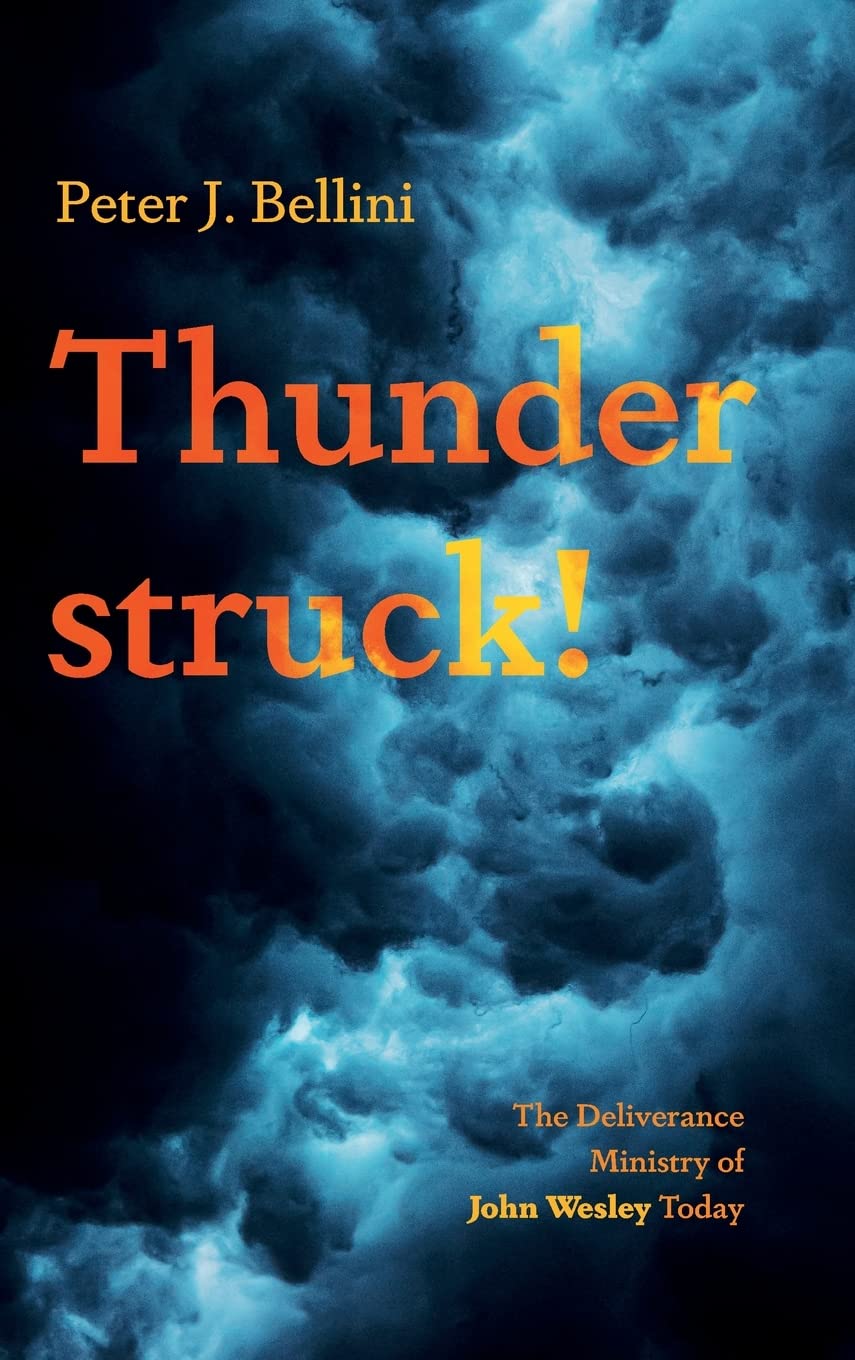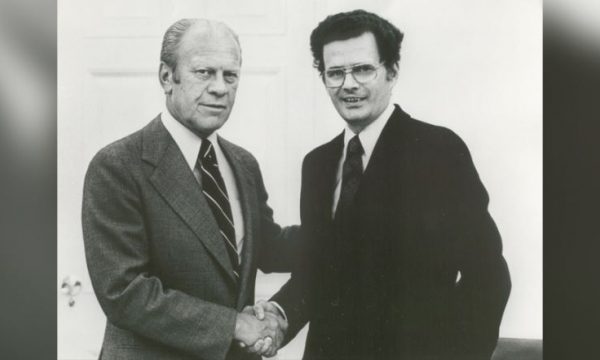Click to join the conversation with over 500,000 Pentecostal believers and scholars
Click to get our FREE MOBILE APP and stay connected
| PentecostalTheology.com



Although United Methodists today will rarely claim that they have had a confrontation with the demonic, let alone serve in a deliverance ministry, John Wesley and many early Methodists frequently encountered demons when ministering the gospel. They even had a deliverance ministry that effectively drove out demons. However, Wesley did not lay claim to any special gift of exorcism for combat in the preternatural fray. Wesley was convinced that ministers could expel demons by ordinary means, such as hearing the Word, repentance, prayer, and worship. Wesley would employ these ordinary means in his deliverance ministry. In part one of this article, we examined Wesley’s ordinary means of deliverance and the various demonic manifestations he faced. In part two, we will identify and analyze a peculiar manifestation of deliverance that occurred in Wesley’s ministry, “being thunderstruck,” or “falling out in the Spirit.”
Deliverance, Thunderstruck, and Being “Slain in the Spirit”
Frequently accompanying Wesley’s ministry of deliverance was a phenomenon that today is called being “slain in the Spirit,” which Wesley called being “thunderstruck.” For example, while Wesley was preaching at Newgate, several persons
dropped on every side as thunderstruck. One of them cried aloud. We besought God in her behalf, and he turned her heaviness into joy. A second being in the same agony, we called upon God for her also; and he spoke peace into her soul. In the evening I was again pressed in spirit to declare, that “Christ gave himself a ransom for all.” And almost before we called upon him to set to his seal, he answered. One was so wounded by the sword of the Spirit, that you would have imagined she could not live a moment. But immediately his abundant kindness was showed, and she sang of his righteousness (WJW 1:188-89*).
I propose making a distinction between the two terms, “thunderstruck” and “slain in the Spirit,” based on the state of those “being thunderstruck” and their contexts. Being “thunderstruck” in Wesley’s day seemed to be related to an unbeliever’s repentance and deliverance from the demonic, while being “slain in the Spirit” in today’s church is often connected to a believer in the context of worship. My simple analysis of this phenomenon is that the mind is short-circuited by the powerful, euphoric presence of God, and they “fall out” under the anesthesia of the Spirit. In that sedate state, God often speaks intimately to the person’s heart, ministers healing, and/ or performs a deeper work of the Spirit.
The two phenomena are distinct. “Thunderstruck” is related to deliverance from sin and the demonic and is often unsettling. “Slain in the Spirit” is related to worship, which can open the door to healing and receiving other gifts such as words, visions, or prophecy. Rather than a disquieting experience, “being slain” is actually a peaceful experience. I believe both types occurred in Wesley’s day and today, though most of what Wesley documents is the “thunderstruck” type.
We notice “thunderstruck phenomena” throughout Wesley’s Journals and Letters and the journals of other early Methodists. Is this phenomenon biblical? In certain places in the Old and New Testaments, though debatable, there seems to be something loosely related to being thunderstruck or slain in the Spirit (see 1 Kings 8:11, 2 Chr. 5:14, Ezek. 1:28, Luke 8:28, John 18:6, Rev. 1:17). In scripture and in revival history, there are accounts of both unbelievers and believers “falling as dead” under God’s power. Sometimes the “slaying” is related to the overwhelming presence of the glory of God. This was the case when the priests in Solomon’s day could not enter the temple or would fall prostrate to the ground because of the majesty and heaviness of God’s holy presence. In this sense, being slain in the Spirit is connected to a believer’s worship of an awesome and holy God.
On the other hand, the presence of God has a different effect on an unbeliever. For example, the Gadarene demoniac fell to the ground at Jesus’ presence (Luke 8:28), and the demons spoke out in fear regarding the day of judgment and identified themselves by name. In John 18:6, we see the officers of the Temple thrown back at the power of Jesus’ word when they came to arrest him. I would categorize these occurrences as being “thunderstruck” since the recipients are in an unregenerated state and encounter the power of God as judgment against evil. Similarly, in Wesley’s time, it seems that the “thunderstruck” phenomenon occurred more in unbelievers and was related to the conviction of sin with its internal struggle against the stronghold of darkness.
As mentioned above, Wesley understood that the ordinary and indirect means of casting out demons by the preached word of God could bring one to repentance. He never claimed an extraordinary gift of exorcism, nor did he confront demons directly while ministering deliverance. Nonetheless, Wesley’s method of using the ordinary means got the job done.
Here are some notable examples of being “thunderstruck”:
Some said, they felt as if a sword was running through them; others, that they thought a great weight lay upon them, as if it would squeeze them into the earth. Some said, they were quite choked, so that they could not breathe; that their hearts swelled ready to burst: Others that it was as if their heart, as if their inside, as if their whole body, was tearing all to pieces. I can make no doubt, but it was Satan tearing them, as they were coming to Christ (WJW, 1:415).
And now the arrows of God flew abroad. The inexpressible groans, the lamenting, praying, roaring, were so loud, almost without intermission, that we who stood without could scarce help thinking all in the church were cut to the heart (WJW, 2:506).
One sunk down, and another, and another. Some cried aloud in agony of prayer. One young man, and one young woman were brought with difficulty … and continued there in violent agonies, both of body and soul … the bodily convulsions of the young man were amazing: the heavings of his breast were beyond description; I suppose, equal to the throes of a woman in travail. We called upon God to relieve his soul and body: And both were perfectly healed (WJW, 2:511-12).
In other instances, Wesley used the phrase “fell down as dead” to describe the phenomena. Wesley writes, “While I was speaking, one before me dropped down as dead, and presently a second and a third” (WJW, 2:06). And again:
That evening six were wounded and fell to the ground, crying aloud for mercy. One of them, hearing the cry, rushed through the crowd to see what was the matter. He was no sooner got to the place than he dropped down himself, and cried as loud as any. The other three pressing on, one after another, were struck just in the same manner. And indeed all of them were in such agonies that many feared they were struck with death. But all the ten were fully delivered before the meeting concluded (WJW, 3:471).
At Wapping, Wesley had prepared to preach on Romans 3:19 but could not open his mouth. He sought God for immediate direction as he was unsure of the text on which he should preach. Wesley opened the Bible to Hebrews 10:19 and began to read and apply the passage:
While I was earnestly inviting all sinners to enter into the holiest by this new and living way, many of those that heard began to call upon God with strong cries and tears. Some sunk down, and there remained no strength in them; others exceedingly trembled and quaked: Some were torn with a kind of convulsive motion in every part of their bodies, and that so violently, that often four or five persons could not hold one of them… one woman greatly offended…also dropped down in as violent an agony as the rest…Twenty -six of those who had been affected…were in a moment filled with peace and joy.
In all of these cases cited, persons were smitten with the Word of God and led into repentance by God’s Spirit. Along the way, they experienced tumultuous and even violent manifestations before they ultimately found deliverance and peace with God. One cannot help but ask if all of these intense phenomena were necessary, and if so, for what purpose?
What is the Purpose of Being Thunderstruck?
What do all of these manifestations mean? Wesley often determined the purpose of these manifestations by their outcome. He employed what I call a “holiness hermeneutic” in order to discern the origin and usefulness of these experiences. Regardless of unsettling manifestations, if the result of hearing the Word of God was repentance, prayer, deliverance, and salvation, then Wesley determined that it was a work of God. Wesley interpreted this thunderstruck phenomenon as a complex, multifaceted battle that involves the inward work of God on the human will. It also involves the battle of the human will seeking to be loosed from the devil, who is ripping at both the soul and body (WJW, 9: 142-144; 14:357-358). It seems that God’s Spirit would penetrate the human heart through the preached Word. People would respond by attempting to draw near to Christ in their quest for repentance. The enemy would “tear,” or strike, at them as they came closer to Christ, trying to thwart their advance (WJW 9:144). After this long bout that would be carried out with accompanying “convulsions,” “roaring,” and much “agony,” the penitent person would find deliverance, salvation, and peace. Wesley seemed to understand that an interior battle for the soul was taking place between God’s Word in the human heart and the enemy’s tormenting stronghold of sin, with the body often suffering as a casualty.
In trying to make sense of this complicated phenomenon, Wesley explained, “if the mind be affected to such a degree, the body must be affected by the laws of the vital union. The mind I believe was, in many of those cases, affected by the Spirit of God, in others by the devil, and in some by both; and, in consequence of this, the body was affected also” (WJW, 9:142). In his letter to Dr. Rutherforth, he simply states; “I speak of them as outward symptoms which have often accompanied the inward work of God” (WJW, 9:357). In other words, being thunderstruck seems to be the collateral effect of God’s power colliding with the kingdom of darkness and felt by the penitent sinner in both body and soul. Falling to the ground is not the goal but a side effect of the deliverance encounter.
In this sense, I would compare spiritual deliverance to delivering a child (as an observer, obviously). Pushing, heavy breathing, roaring, convulsions, and pain can accompany childbirth, and at times even accompany the new birth as well. Being thunderstruck and similar manifestations are merely new birth pains. Thus, to be thunderstruck should not be a goal that is sought out by the minister or the seeker. Deliverance and redemption are the goals. But at times, there are other collateral effects, like thunder, lightning, and quaking, that manifest when hell is shaken, and a new creation is birthed!
I think it can be fairly stated that most of the cases cited in Wesley’s deliverance ministry can be classified as an ordinary, indirect type of casting out of devils. As mentioned, there are also the ordinary-direct method and the extraordinary-direct method of casting out demons. The purpose of this article is to inspire Wesleyans and all believers alike, in this evil day, to reclaim their scriptural authority and power in Christ (ordinary and extraordinary) and the deliverance ministry of the church, which has been so often neglected or abused in the church today. Matthew 10:8 and Luke 10:18-20 make it clear that all of Christ’s disciples have been given the authority to continue Christ’s ministry of liberation. In Wesley’s day deliverance was a vital component to Methodism’s overall ministry of salvation, and it should be today for the people called Methodists as well. It is high time to rid ourselves of excuses and walk in it! Souls are at stake!
* All Wesley references and citations are from Works of John Wesley, ed. Jackson, 3rd ed. 14 vols. (London: Wesleyan Conference Office, 1872).
Peter J. Bellini is Professor of Church Renewal and Evangelization in the Heisel Chair at United Theological Seminary in Dayton, Ohio.




Anonymous
Isara Mo William DeArteaga Link Hudson Joseph D. Absher
Strategic Level Spiritual Warfare
A Historical Survey of the Concept of Strategic Level Spiritual Warfare: Spiritual Mapping, Territorial Spirits, and Related Praxis
Spiritual Mapping and Strategic-Level Spiritual Warfare SLSW
https://www.pentecostaltheology.com/?s=strategic
Anonymous
Your title comment makes one think Wesley had demons in him, Rephrase.
Anonymous
William DeArteaga wrong Wesley? read the post firs pls